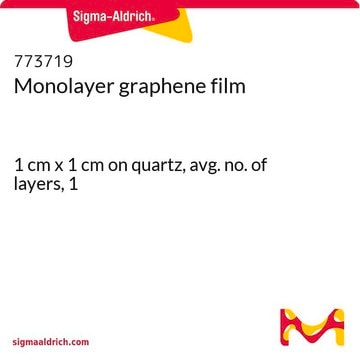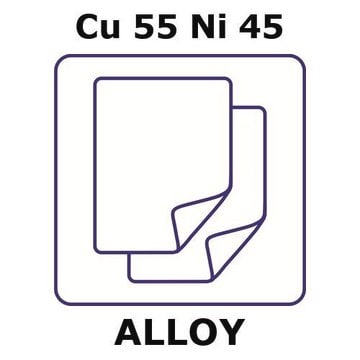GF37965943
Tungsten
foil, 50x50mm, thickness 0.3mm, as rolled, 99.95%
Synonym(s):
Tungsten, W 000325, W
Sign Into View Organizational & Contract Pricing
All Photos(2)
About This Item
Empirical Formula (Hill Notation):
W
CAS Number:
Molecular Weight:
183.84
MDL number:
UNSPSC Code:
12141747
PubChem Substance ID:
NACRES:
NA.23
Recommended Products
Assay
99.95%
form
foil
manufacturer/tradename
Goodfellow 379-659-43
resistivity
4.9 μΩ-cm, 20°C
size × thickness
50x50 mm × 0.3 mm
bp
5660 °C (lit.)
mp
3410 °C (lit.)
density
19.3 g/mL at 25 °C (lit.)
SMILES string
[W]
InChI
1S/W
InChI key
WFKWXMTUELFFGS-UHFFFAOYSA-N
Related Categories
General description
For updated SDS information please visit www.goodfellow.com.
Legal Information
Product of Goodfellow
Certificates of Analysis (COA)
Search for Certificates of Analysis (COA) by entering the products Lot/Batch Number. Lot and Batch Numbers can be found on a product’s label following the words ‘Lot’ or ‘Batch’.
Already Own This Product?
Find documentation for the products that you have recently purchased in the Document Library.
J R Marbach et al.
Physics in medicine and biology, 26(3), 435-443 (1981-05-01)
Curves relating beam energy, scattering foil thickness, central-axis depth-dose, and beam flatness have been generated using data taken on a Siemens 200A betatron. The curve set allows a single combination of tungsten foil thickness and electron beam energy to be
Congshang Wan et al.
Ultramicroscopy, 119, 106-110 (2011-11-15)
Thermionic electron emission from 200 to 500 nm thick coatings of scandium oxide on tungsten foil have been examined in thermionic emission microscopy, spectroscopic photoelectron microcopy, synchrotron radiation and ultraviolet photoelectron spectroscopy (UPS). A clear dependence of the scandium oxide-W
Richard R Schrock et al.
Angewandte Chemie (International ed. in English), 42(38), 4592-4633 (2003-10-09)
Catalytic olefin metathesis has quickly emerged as one of the most often-used transformations in modern chemical synthesis. One class of catalysts that has led the way to this significant development are the high-oxidation-state alkylidene complexes of molybdenum. In this review
Nikolay Strigul
Ecotoxicology and environmental safety, 73(6), 1099-1113 (2010-09-16)
Tungsten is a widely used transition metal that has not been thoroughly investigated with regards to its ecotoxicological effects. Tungsten anions polymerize in environmental systems as well as under physiological conditions in living organisms. These polymerization/condensation reactions result in the
Jan R Andreesen et al.
Annals of the New York Academy of Sciences, 1125, 215-229 (2007-12-22)
The history and changing function of tungsten as the heaviest element in biological systems is given. It starts from an inhibitory element/anion, especially for the iron molybdenum-cofactor (FeMoCo)-containing enzyme nitrogenase involved in dinitrogen fixation, as well as for the many
Our team of scientists has experience in all areas of research including Life Science, Material Science, Chemical Synthesis, Chromatography, Analytical and many others.
Contact Technical Service



